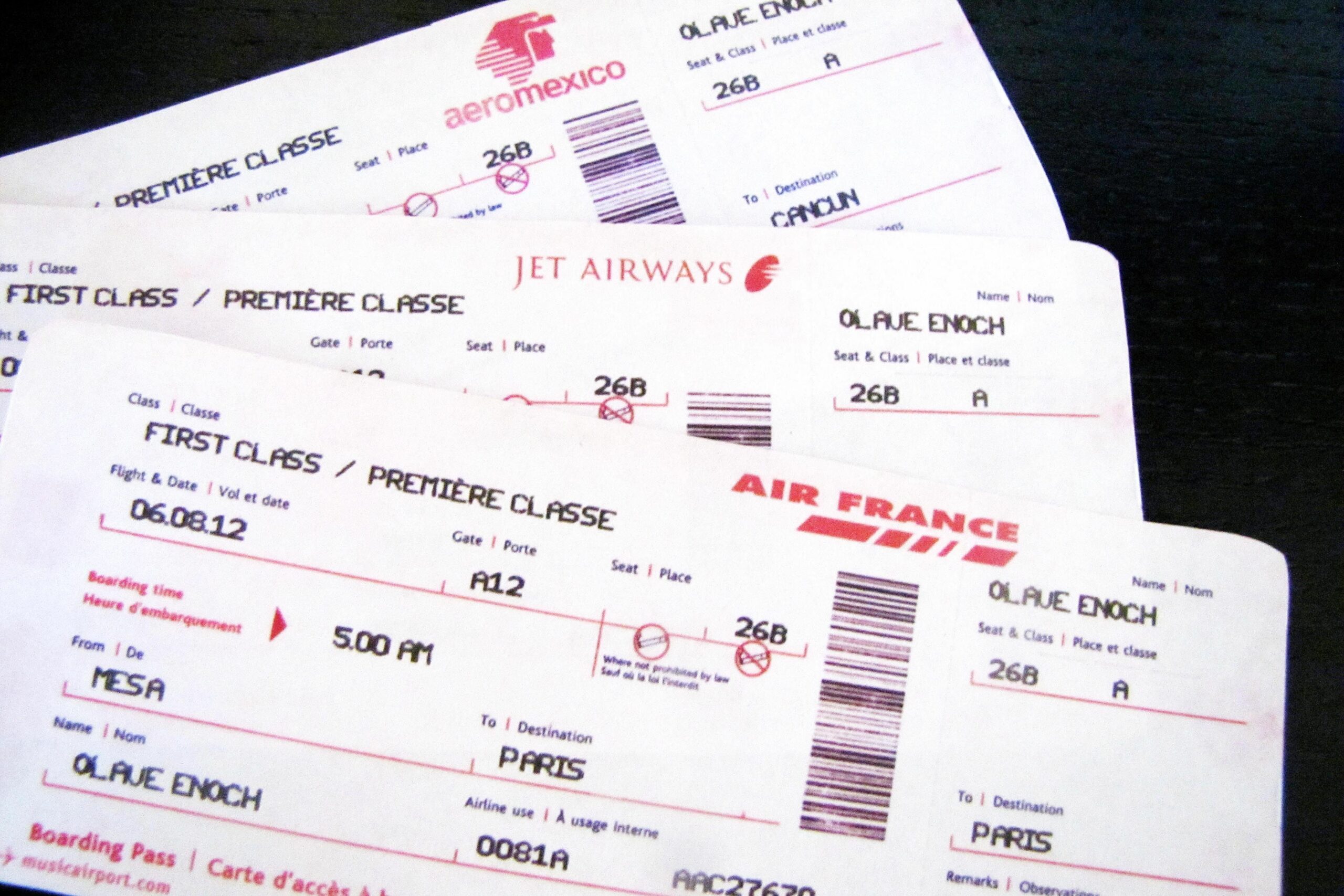Cheap airline tickets for seniors citizen are a hot topic, especially with the rising cost of travel. This guide delves into strategies for finding affordable flights, navigating airline policies, and understanding the nuances of senior discounts. We’ll explore various methods to secure the best deals, including utilizing flight comparison websites and understanding the advantages and disadvantages of booking directly with airlines. Beyond just the ticket price, we’ll also examine the importance of travel insurance for senior travelers and discuss accessibility options for those with mobility challenges. Ultimately, this resource aims to empower senior citizens to plan and enjoy affordable and comfortable air travel.
This comprehensive guide covers various aspects of air travel for seniors, providing practical advice and actionable steps to help you find the best deals and plan a smooth journey. From comparing airline policies and using flight comparison websites effectively, to understanding travel insurance options and budgeting strategies, this resource aims to be your complete guide to affordable and accessible air travel.
Finding the Cheapest Flights
Securing affordable air travel is crucial for seniors planning trips, especially on a fixed income. This section outlines a strategic approach to finding the best flight deals, encompassing various booking methods and helpful tips. Careful planning and research can significantly reduce travel costs.
Utilizing Flight Comparison Websites
Effective use of flight comparison websites is paramount in finding the cheapest airfare. These websites aggregate flight data from numerous airlines, allowing for quick price comparisons. To maximize their utility, consider these steps:
First, input your desired travel dates with flexibility. Experimenting with shifting your departure and return dates by a day or two can often reveal substantial savings. Mid-week flights (Tuesday and Wednesday) are frequently cheaper than weekend flights. Second, be mindful of the airports you select. Flying into a smaller, less popular airport near your destination might offer lower fares than major international hubs. Finally, remain flexible with your destination. If your travel dates are fixed, consider exploring nearby airports or alternative destinations within a reasonable distance of your original choice. This could unlock significant cost savings.
Direct Airline Bookings versus Third-Party Websites
Booking directly with airlines versus using third-party websites presents distinct advantages and disadvantages.
Booking directly with airlines offers greater control over your itinerary, including potential for easier changes or cancellations. However, you might miss out on deals offered by third-party aggregators. Third-party websites, conversely, often showcase a broader range of options and occasionally offer bundled deals, such as combined flight and hotel packages. However, changes or cancellations can be more complex and potentially more expensive. The best approach depends on your individual needs and preferences. Consider factors like flexibility, potential for changes, and the importance of bundled deals when making your decision.
A Step-by-Step Guide to Finding Cheap Flights
Finding the cheapest flights involves a methodical approach combining online tools and strategic planning.
- Identify your travel dates and destinations: Begin by establishing your preferred travel dates and destinations. Flexibility in dates often leads to better deals.
- Utilize flight comparison websites: Use multiple flight comparison websites (e.g., Google Flights, Skyscanner, Kayak) to compare prices across various airlines.
- Consider alternative airports: Explore nearby airports to your origin and destination. Smaller airports often have lower fares.
- Be flexible with your travel dates: Experiment with shifting your departure and return dates to find cheaper options.
- Set up price alerts: Many websites offer price alerts, notifying you of price drops for your selected flights.
- Book in advance or at the last minute (depending on the route and time of year): Generally, booking in advance secures better deals, but last-minute deals can sometimes appear.
- Compare prices across different airlines: Don’t rely solely on comparison websites; check directly with airlines for potential discounts.
- Review baggage fees and other charges: Factor in baggage fees and other potential charges when comparing prices.
- Book your flight: Once you have found the best deal, book your flight through the preferred method (airline directly or third-party website).
Flowchart for Finding and Booking Cheap Flights
The following describes a flowchart illustrating the process. Imagine a flowchart starting with a “Start” box. This leads to a decision box: “Flexible Dates?”. If yes, it branches to “Use comparison websites, vary dates.” If no, it branches to “Use comparison websites, fixed dates.” Both branches then lead to a decision box: “Found suitable flight?”. If yes, it proceeds to “Book flight (directly or third party)”. If no, it loops back to “Use comparison websites…”. Finally, there is an “End” box. This visual representation clarifies the iterative nature of flight searching, emphasizing the importance of flexibility and comparison.
Travel Insurance and Senior Citizens
Travel insurance is a crucial consideration for senior citizens planning a trip, offering peace of mind and financial protection against unforeseen circumstances. The increased risk of health issues and the potential for higher medical costs associated with aging make comprehensive coverage particularly important for this demographic. Choosing the right policy can significantly mitigate potential financial burdens and ensure a smoother travel experience.
Types of Travel Insurance Policies and Senior Coverage
Several types of travel insurance policies cater to the specific needs of senior travelers. Basic policies typically cover trip cancellations, lost luggage, and emergency medical expenses. However, more comprehensive plans offer broader coverage, including medical evacuation, repatriation of remains, and extended medical stays. Policies designed for seniors often include higher coverage limits for medical expenses, recognizing the increased likelihood of requiring medical attention during travel. Some policies even offer specialized coverage for pre-existing conditions, although this usually comes at a higher premium. It’s vital to carefully review the policy wording to understand the specific inclusions and exclusions.
Cost and Benefits Comparison of Travel Insurance Options
The cost of travel insurance for seniors varies widely depending on factors such as age, destination, length of trip, and the level of coverage chosen. Basic plans are generally more affordable but offer limited protection. Comprehensive policies, including those with higher medical expense limits and coverage for pre-existing conditions, are significantly more expensive. The benefit of a comprehensive policy, however, lies in the enhanced protection it offers, potentially saving substantial amounts of money in the event of a medical emergency abroad. Weighing the cost against the potential financial risks is essential when making a decision.
Comparison of Three Travel Insurance Plans for Seniors
The following table compares three hypothetical travel insurance plans suitable for seniors, highlighting key features and costs. These are examples and actual plans will vary. Always check the policy details directly with the provider.
| Plan Name | Medical Expense Coverage | Trip Cancellation Coverage | Pre-existing Condition Coverage | Approximate Cost (7-day trip) |
|---|---|---|---|---|
| Basic Plan | $10,000 | $500 | None | $50 |
| Standard Plan | $50,000 | $1,000 | Limited (with additional documentation) | $150 |
| Comprehensive Plan | $100,000 | $2,000 | Comprehensive (subject to underwriting) | $300 |
Accessibility and Senior-Friendly Airlines
Traveling by air can present unique challenges for senior citizens, particularly those with mobility issues. Fortunately, many airlines recognize these challenges and offer a range of accessibility features designed to make air travel safer and more comfortable for elderly passengers. Understanding these services and the support available at airports is crucial for planning a smooth and stress-free journey.
Airline Accessibility Features for Senior Citizens
Several airlines prioritize the needs of senior travelers by offering a variety of accessibility features. These features range from pre-boarding assistance to specialized in-flight care. Airlines often provide detailed information about their accessibility services on their websites, allowing passengers to plan ahead and request the necessary assistance. Some airlines go above and beyond standard accommodations, offering personalized support tailored to individual needs.
Examples of Senior-Friendly Airlines
While many airlines provide basic accessibility services, some stand out for their exceptional commitment to elderly passengers. For example, airlines such as Southwest Airlines are known for their generally helpful staff and accommodating approach to passenger needs, often going the extra mile to assist those requiring extra help. Similarly, some international carriers, particularly those with a strong focus on customer service, have earned a reputation for providing superior care to senior citizens. It’s always advisable to check individual airline websites for specific accessibility policies and services.
Airport Assistance for Senior Travelers
Airports worldwide offer a range of services designed to assist senior travelers with mobility limitations. Wheelchair assistance is readily available at most major airports, often provided by airport staff or contracted service providers. Passengers can request wheelchair assistance in advance when booking their flights or directly through the airport. In addition to wheelchair assistance, many airports offer assistance with baggage handling, ensuring a more comfortable travel experience for seniors. This can include curbside assistance for checking bags and assistance with retrieving luggage upon arrival.
Comparison of Airline Accessibility Features
The following table summarizes the accessibility features offered by four different airlines (Note: Specific services and availability may vary depending on the route, aircraft type, and other factors. Always confirm directly with the airline before travel.):
| Airline | In-flight Assistance | Wheelchair Assistance | Airport Services |
|---|---|---|---|
| Airline A (Example: Delta) | Pre-boarding, special meal requests, assistance with mobility aids | Available upon request, both at departure and arrival airports | Wheelchair assistance, baggage assistance, priority check-in |
| Airline B (Example: United) | Oxygen tanks (with prior notification), assistance with medication | Available upon request, dedicated wheelchair assistance teams | Wheelchair assistance, priority boarding, special assistance counters |
| Airline C (Example: Southwest) | Assistance with seat selection, assistance with personal items | Available upon request, coordination with airport services | Wheelchair assistance, baggage claim assistance |
| Airline D (Example: British Airways) | Special assistance for passengers with disabilities, including hearing and visual impairments | Comprehensive wheelchair assistance program | Dedicated assistance desks, priority baggage handling |
Budgeting for Senior Air Travel
Planning a trip requires careful budgeting, especially for seniors who may be on a fixed income. Creating a realistic budget ensures a stress-free and enjoyable travel experience without exceeding financial limits. This section will guide you through creating a budget, identifying cost-saving measures, and managing expenses effectively for senior air travel.
Creating a Realistic Budget
A successful travel budget starts with identifying your priorities and constraints. Begin by determining your total travel fund. This might be a specific amount saved, or it could be a percentage of your retirement income allocated for travel. Next, list all anticipated expenses, categorizing them for better tracking. This includes flights, accommodation, activities, meals, transportation (including airport transfers), visas (if applicable), travel insurance, and spending money. Research average costs for each category in your chosen destination. Websites and travel guides can provide helpful estimates.
Saving Money on Flights
Securing affordable airfare is crucial for seniors. Consider booking flights well in advance to take advantage of early bird discounts. Being flexible with your travel dates can also significantly impact the price. Mid-week flights (Tuesday and Wednesday) are often cheaper than weekend flights. Using flight comparison websites allows you to compare prices from multiple airlines simultaneously. Furthermore, consider flying during the off-season or shoulder seasons (periods before and after peak tourist times) for lower fares.
Consider using flight comparison websites and being flexible with your travel dates to secure the best deals.
Saving Money on Accommodation
Accommodation can consume a significant portion of your travel budget. Exploring options beyond luxury hotels can save considerable money. Consider staying in budget-friendly hotels, guesthouses, or Airbnb accommodations. If traveling with companions, sharing a room can reduce costs. Look for discounts or senior citizen rates offered by hotels or accommodation providers. Also, consider the location of your accommodation; staying slightly outside the city center often translates to lower prices.
Look for budget-friendly options like guesthouses or Airbnb and consider sharing a room to reduce accommodation costs.
Saving Money on Activities and Other Expenses
Many tourist attractions offer discounts for seniors. Always inquire about senior citizen rates before purchasing tickets. Pack light to avoid checked baggage fees. Take advantage of free activities such as walking tours, visiting parks, and exploring local markets. Plan meals strategically; packing some snacks and preparing some meals yourself can significantly reduce food costs. Utilizing public transportation instead of taxis or ride-sharing services can also save money.
Take advantage of senior discounts offered by many attractions and utilize free activities to reduce expenses.
Sample Budget Plan for a Week-Long Trip
This is a sample budget for a week-long trip to a moderately priced destination, such as certain parts of Europe or the US. Remember, these are estimates, and costs can vary significantly depending on the destination and your travel style.
| Expense Category | Estimated Cost |
|---|---|
| Round-trip Flights | $800 |
| Accommodation (7 nights) | $700 |
| Activities and Entrance Fees | $350 |
| Food and Drinks | $400 |
| Transportation (local) | $100 |
| Travel Insurance | $50 |
| Spending Money | $200 |
| Total Estimated Cost | $2600 |
Remember that this is a sample budget and costs can vary. Adjust the budget based on your chosen destination and travel style.
Conclusion
Securing cheap airline tickets for seniors doesn’t have to be a daunting task. By understanding airline pricing strategies, leveraging online tools, and planning ahead, seniors can significantly reduce their travel costs. Remember to prioritize travel insurance and consider accessibility options when making your travel arrangements. With careful planning and the information provided in this guide, you can confidently embark on your next adventure knowing you’ve secured the best possible value for your travel investment. Enjoy the journey!




